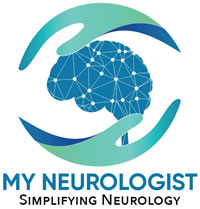Also called motor neuropathy with multifocal conduction blocks, this is a distinct type of neuropathy affecting motor nerves.
What is a motor nerve?
A nerve is like a long wire. Each nerve is also a cell, with a central nucleus and surrounding cytoplasm. The nerve cell has a distinctly long extension, similar to a wire, which sometimes can extend for more than a meter. The purpose of this structure is signal transmission, which in case of motor nerve is from brain or spinal cord to the muscles. The nuclei of motor nerves reside in the spinal cord with the extension coming out in the form of short or long nerves. A material called myelin, like an insulation material, covers this extension. Unlike a conventional wire that is uniformly coated with plastic, the myelin coating of nerves has gaps at regular intervals. These gaps are called nodes of Ranvier, which help to speed up the process of message transfer.
What is the cause of MMN?
A distinct antibody attacking the nodes of Ranvier areas of motor nerves, and resulting in failure of message transmission, usually called conduction block, causes it. Anti-GM1 antibodies are associated with this condition.
What are the symptoms of MMN?
It causes weakness in distinct set of muscles supplied by a nerve, instead of diffuse weakness seen in many other neuropathies. It affects nerves of upper extremities more than lower.
What are the examination findings of MMN?
One may find weakness of muscles supplied by an individual nerve, sometimes with fasciculations, and usually without atrophy. Muscle atrophy may occur if the condition progresses and damages the nerve.
How is MMN diagnosed?
It is mostly by pattern recognition; a particular pattern of weakness suggesting problem with individual nerves without any sensory problems suggest this diagnosis. For confirmation, EMG/NCS, electromyogram and nerve conduction study, is done. EMG/NCS can help to confirm blockage of electric signal, partial or complete, in individual nerves on sites that are usually not compressed. For example, median nerve is frequently compressed at wrist level causing Carpal tunnel syndrome. In a patient with MMN, median nerve conduction block may be found in the arm. Abnormal findings in at least two motor nerves can help to make the diagnosis. Other ways to help make the diagnosis are nerve ultrasound, and MRI of brachial plexus. In blood tests, serum protein electrophoresis, especially IgM level, and anti-GM1 antibody titer can be helpful.
How is MMN treated?
First line of treatment is intravenous immunoglobulins, IV-Ig. IV-Ig is a long-term treatment, and patients can try to switch to SC Ig for ease of administration. Steroids may make the condition worse. Alternate option for patients not responding to IV-Ig is IV cyclophosphamide, with or without plasma exchange.
Where can I get more information about MMN?
GBS/CIDP Foundation International


Leave a Reply
Your email is safe with us.
You must be logged in to post a comment.